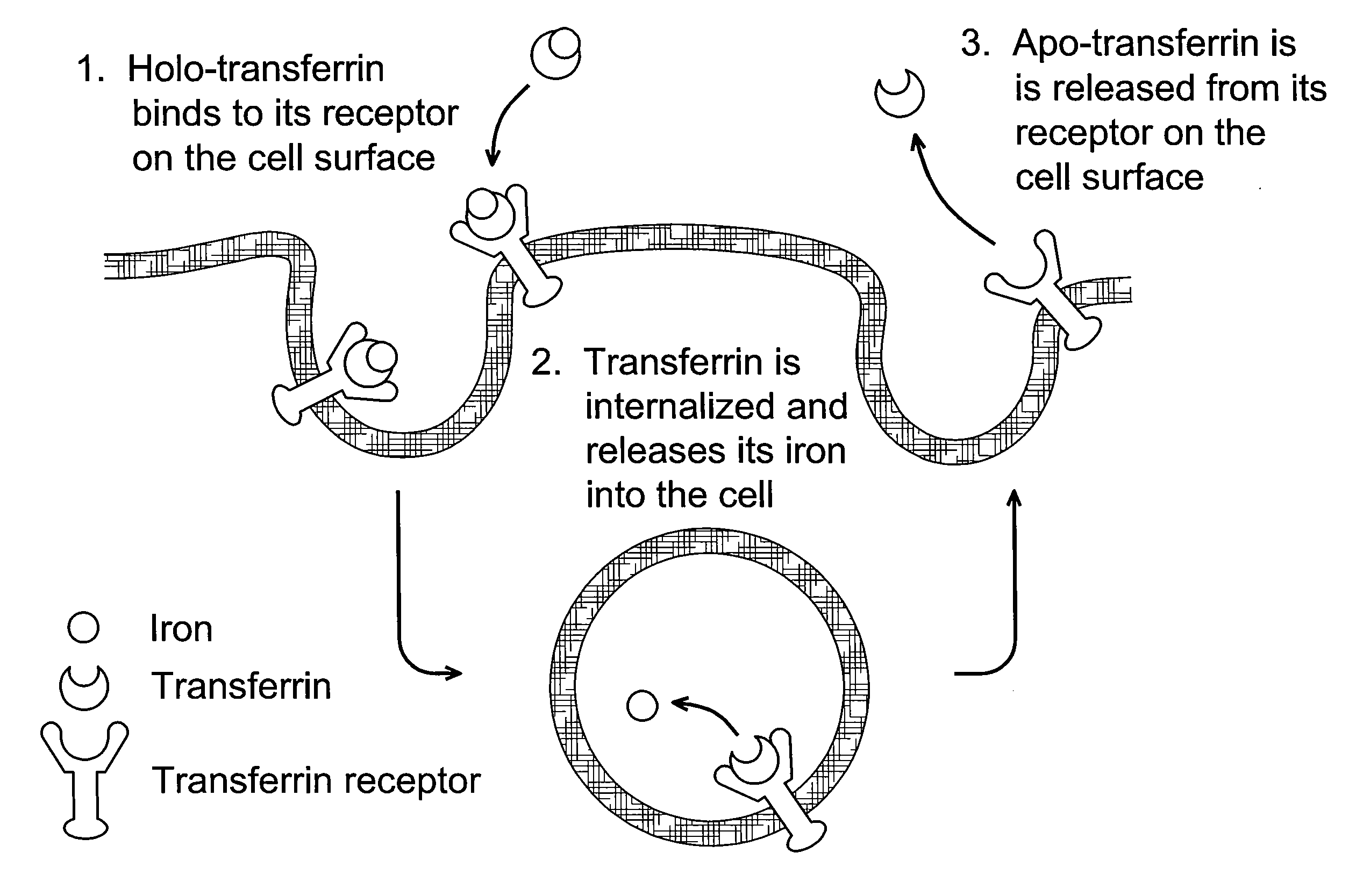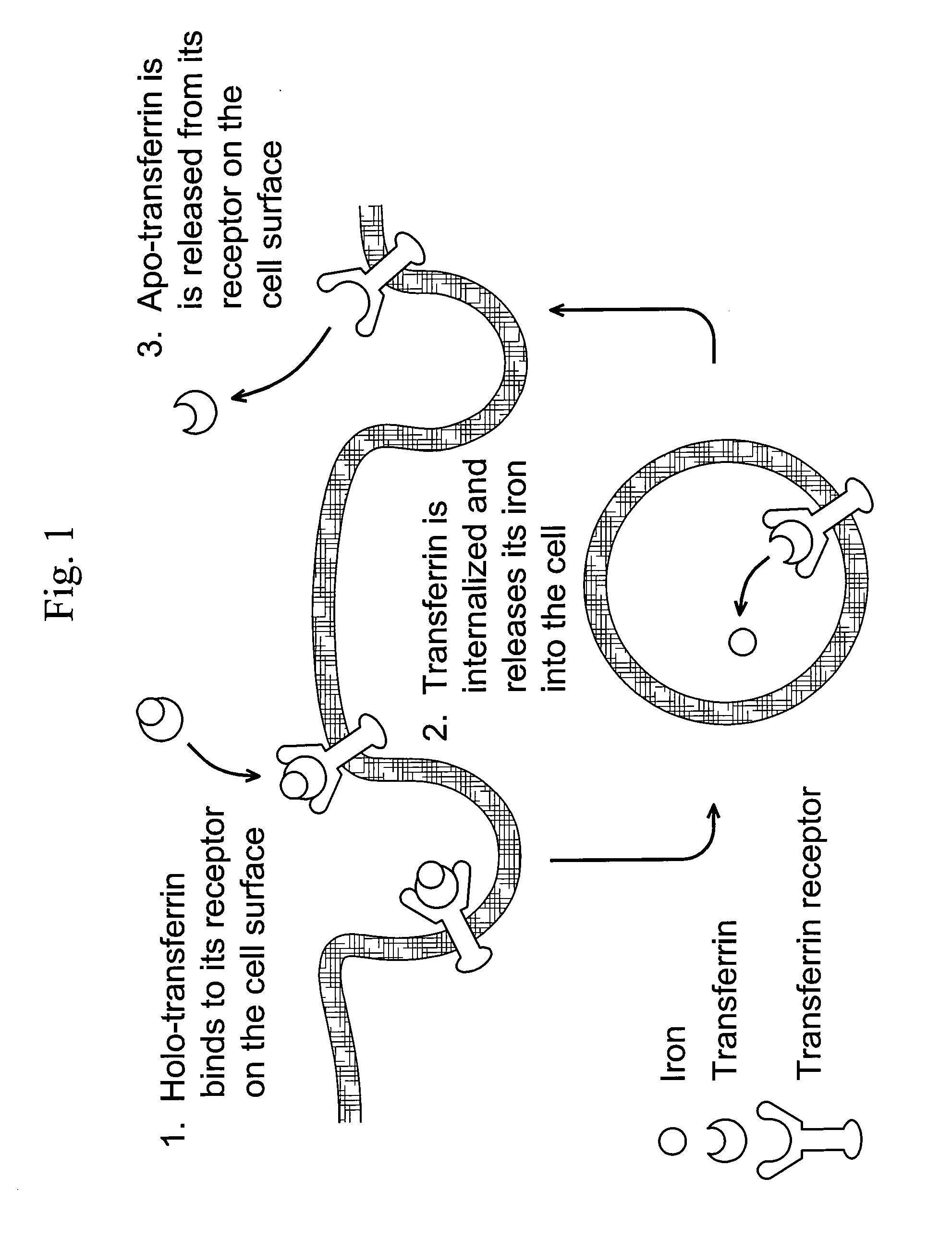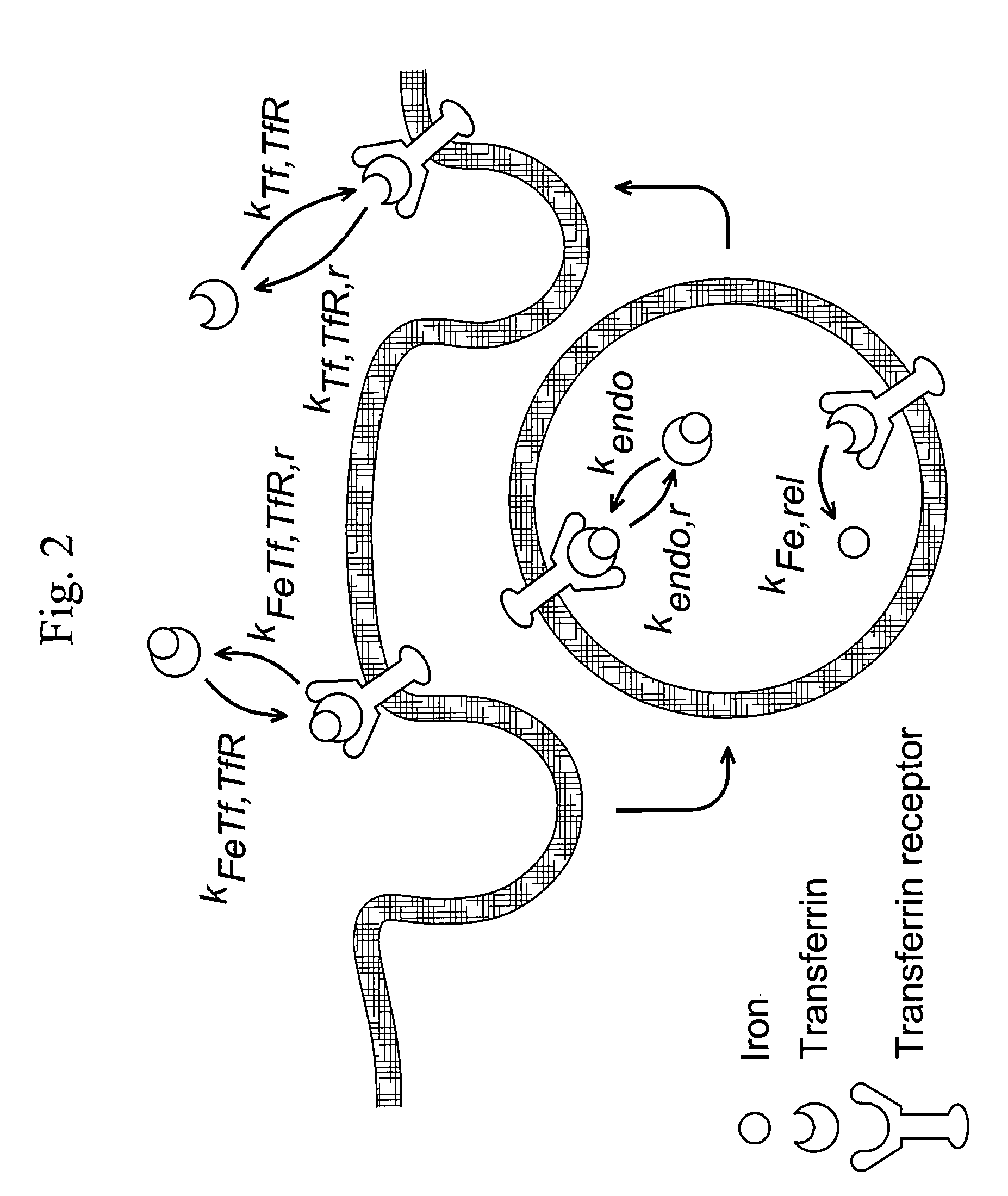Cancer drug delivery using modified transferrin
a transferrin and cancer drug technology, applied in the direction of transferrins, antibody medical ingredients, carrier-bound antigen/hapten ingredients, etc., can solve the problems of significant non-specific cellular association, significant limit the efficiency of the drug carrier, and inflammation to the death of the patient, so as to increase the cellular internalization, and increase the cellular association
- Summary
- Abstract
- Description
- Claims
- Application Information
AI Technical Summary
Benefits of technology
Problems solved by technology
Method used
Image
Examples
example 1
[0106]The following example illustrates the use of a mathematical model for Transferrin / Transferrin Receptor trafficking for the identification of kinetic properties that can be altered to increase therapeutic value.
[0107]To investigate whether Tf itself could be modified to change its cellular trafficking behavior, we employed a mathematical model of Tf / TfR trafficking. The use of models for the study of the Tf / TfR trafficking system is well-established, though typically such models are used to analyze and better understand experimental data (Yazdi and Murphy, Cancer Res. 1994; 54(24):6387-94; Ciechanover et al., J Biol Chem. 1983; 258(16):9681-9). Here, we have used the model as a convenient framework to allow a mathematical assessment of how changes in intracellular trafficking could result from alteration of Tf properties. By systematically varying the values of seven different Tf parameters, the model indicated that decreasing the rate of iron release from Tf is a potential str...
example 2
[0154]This Example demonstrates that the reduced iron release kinetics of oxalate Tf result in increased cellular association of oxalate Tf compared to native Tf.
[0155]To test the prediction of the model, we generated a version of Tf in which iron release is inhibited. This strategy seemed preferable over attempting to increase the affinity of apo-Tf for TfR, as increasing protein affinity is very challenging (Rao et al., Nat Biotechnol. 2005; 23(2):191-4) whereas the literature contains numerous examples of successful efforts to slow or inhibit iron release from Tf. We chose to replace the synergistic carbonate anion with oxalate, which greatly reduces the iron release rate of iron from Tf without significantly affecting its binding affinity for TfR (Halbrooks et al., J Mol Biol. 2004; 339(1):217-26). A summary of the iron release rates for native Tf and oxalate Tf (Ciechanover et al., J Biol Chem. 1983; 258(16):9681-9) is presented in Table 5.
TABLE 5Iron release rates of native Tf...
example 3
[0160]Diphtheria toxin conjugates of oxalate Tf are more cytotoxic against HeLa cells than native Tf conjugates.
[0161]DT conjugates of holo-Tf were made using 2-iminothiolane and sulfo-SMCC (Pierce Biotechnology) as crosslinkers. To thiolate DT, 6.4 μL of an iminothiolane-HCl solution (prepared by dissolving 0.5 mg of iminothiolane-HCl in 800 μL of the borate buffer) was added to 0.3 mg of DT dissolved in 60 μL of borate buffer (0.1 M sodium borate, pH 8 containing 1 μM EDTA, 0.15 M NaCl). After 90 minutes at room temperature, the thiolated DT was separated from free iminothiolane by size exclusion chromatography using small spin columns (Zeba Desalt Spin Column, Pierce Biotechnology).
[0162]While DT was being thiolated, Tf was reacted with sulfo-SMCC by first dissolving 0.5 mg of sulfo-SMCC in 20 μL of DMSO and then adding that solution to 80 μL of borate buffer. Tf (16 mg) was dissolved in 2 mL of borate buffer and 36 μL of the SMCC solution was added. After 90 minutes at room temp...
PUM
| Property | Measurement | Unit |
|---|---|---|
| Fraction | aaaaa | aaaaa |
| Therapeutic | aaaaa | aaaaa |
Abstract
Description
Claims
Application Information
 Login to View More
Login to View More - R&D
- Intellectual Property
- Life Sciences
- Materials
- Tech Scout
- Unparalleled Data Quality
- Higher Quality Content
- 60% Fewer Hallucinations
Browse by: Latest US Patents, China's latest patents, Technical Efficacy Thesaurus, Application Domain, Technology Topic, Popular Technical Reports.
© 2025 PatSnap. All rights reserved.Legal|Privacy policy|Modern Slavery Act Transparency Statement|Sitemap|About US| Contact US: help@patsnap.com



